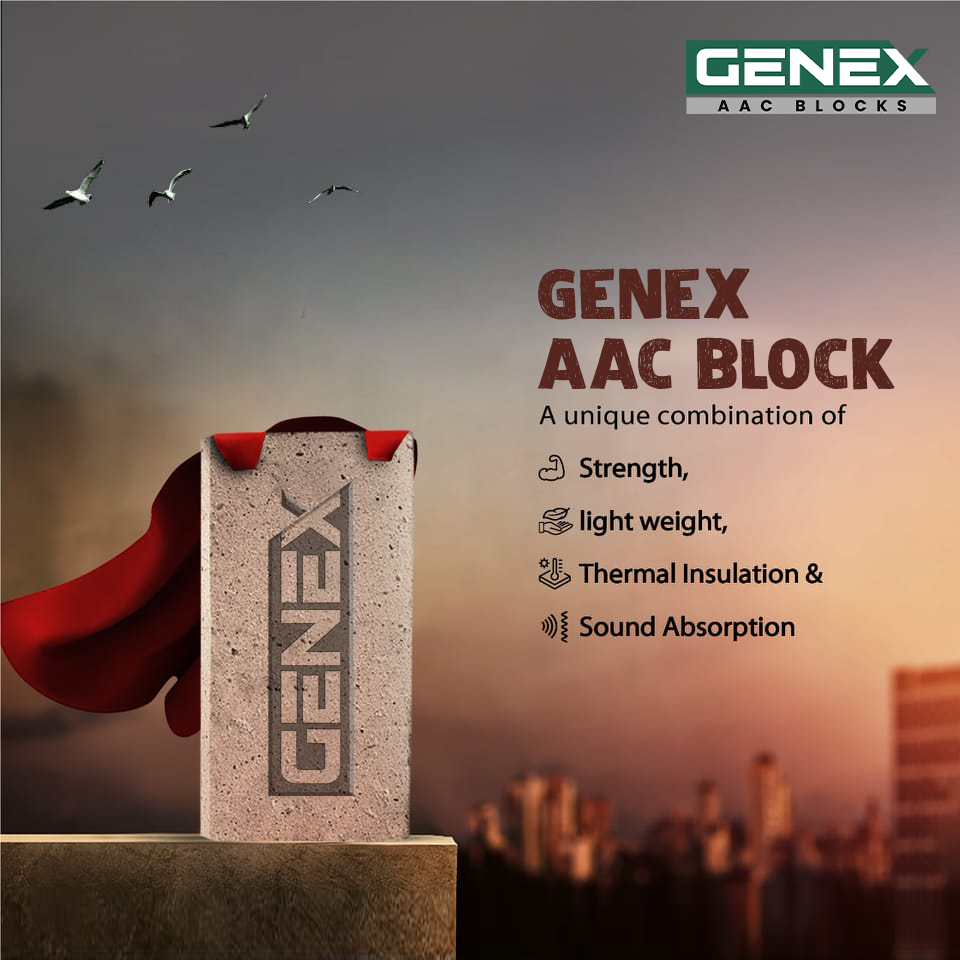History and Evolution of AAC Blocks

When these aerated concrete blocks are in trend, let’s have a look at the history and evolution of AAC blocks. Autoclaved Aerated Concrete, also popularly known as AAC Blocks, is gaining demand in the construction industry. There comes no doubt why they remain the most wanted building material- there are many significant factors that inculcate to this. For instance- their cost-effectiveness, light weight, easily transportable, environment and sustainable property makes them the centre of attraction.
Modern architectural works demand to meet the above features of AAC bricks and they are the first choice for every engineer and architect. To put it in a simple way, aerated concrete slabs are sustainable light weight foam concrete construction materials. They are made from a mixture of quartz sand, calcined gypsum, lime, portland cement, water and aluminium powder.
Today, lets dig into the history and origin of this highly acclaimed building substance in brief.
Genesis
The most demanded AAC blocks have been in existence since the dawn of the 20th century. The origin of Autoclaved Aerated Concrete accompanied a sequence of copyright proceedings. Michaelis, a German researcher, got the copyright on his steam curing process in the year 1880. Next, Czecch Hoffman promisingly sampled the process of ‘aerating’ the concrete by carbon dioxide and received the license for it. Again, in 1914 two Americans- Aylsworth and Dyer applied aluminium powder and calcium hydroxide. This was done to achieve a permeable cementitious mixture and the outcome was, they received a patent for it.
Once again, in 1920 Swede Axel Erikkson got the patent, when he successfully made a momentous move towards the evolution of modern AAC Blocks. He applied the method of manufacturing an aerated mix of limestone and ground slate.
The Step Forward
Now it was time to take a step forward from all the various contributions towards the formation of the present day AAC stone. And the said moment took its form, when in 1923 Axel Eriksson tracked down that the moist foamed concentration could comfortably hold pressurized steam curing process. This process is also called autoclaving.
Here, two major steps were finalized ahead of the copyright approval. And they are-
- That the substance hardened.
- And that there was zero shrinkage.
Moreover, in the later period, he came to the conclusion that other materials like pulverized ash, could also be used in place of lime/cement. Eventually, it has a role in providing a cost-effective product.
Stepping into the Business of Manufacturing World
The next major step into the commercial world, paved its way in 1929. “Yxhults Stenhuggeri Aktibolag”, a factory took the responsibility of providing the platform of a large-scale manufacturing of artificially-made crystalized stone. Later in 1942 the name ‘Yxhults’ changed into ‘Ytong’ as the former name was hard to spell.
Another factory by the name Carlsro Kalkbruk Skovde kicked off in 1937 with AAC Block production, under the brand name- ‘Durox’. Various other significant competitors like Siporit came into existence, which later altered its name into Siporex. They instituted the AAC fortified elements in 1935 such as roof/floor panels and lintels. It is one of the formidable periods in the history and evolution of AAC blocks.
Very soon, it spread all through Western Europe and in Sweden it exceeded more than 6 plants.
Competition and Development
Post-World War II, many countries in Europe- Germany, United Kingdom, Sweden, Denmark and Netherlands set themselves as the prime AAC manufacturers. And as the popularity of AAC bricks grew there were various competitions in the market. Gradually, by the 1980s the influence of Swedes declined as the domestic market faced adversity. And thus, Siporex faced its downfall too.
Amidst the prevailing major competitions in the market, various manufacturing plants came to existence in Asia, Middle East and Eastern Europe. By 2014 the technological advancement in terms of AAC production increased to more than 3000 manufacturing plants.
AAC Products in the Present Scenario
With the development of science and technology the production of AAC has significantly changed. Though the manufacturing of AAC slates remains a challenging task, as time passed by the substantial properties of the aerated concrete improved. And today AAC stands as a solid building material with its excellent features.
Bottomline
The evolution of Autoclaved Aerated Concrete is really remarkable and has gone through bundles of tests and experiments. No doubt, the journey had been a remarkable one, paving its way to a formidable construction material. It’s obvious that the history and evolution of AAC blocks had its own journey.
About Genex
Stationed in Guwahati, Genex is engaged in producing premium and quality AAC blocks in the entire northeast India. Their products ensure a strong, cost-effective and eco-friendly construction.
To know more about History and Evolution of AAC Blocks visit our page and follow us on Facebook, and Instagram
